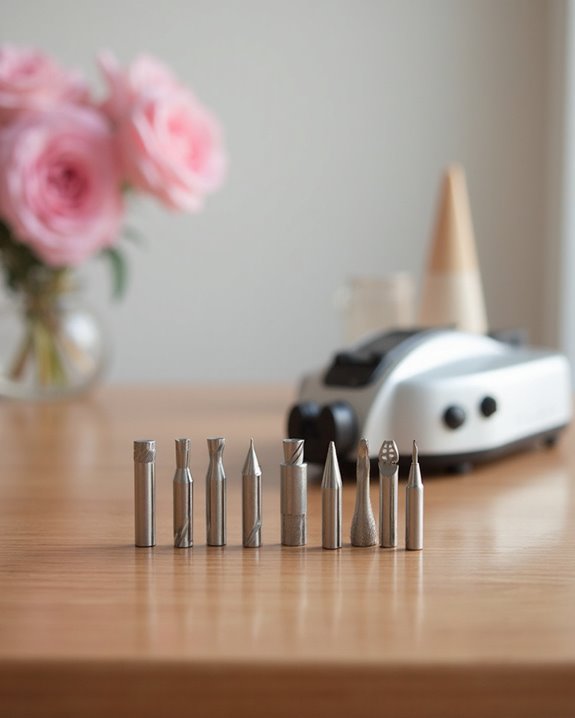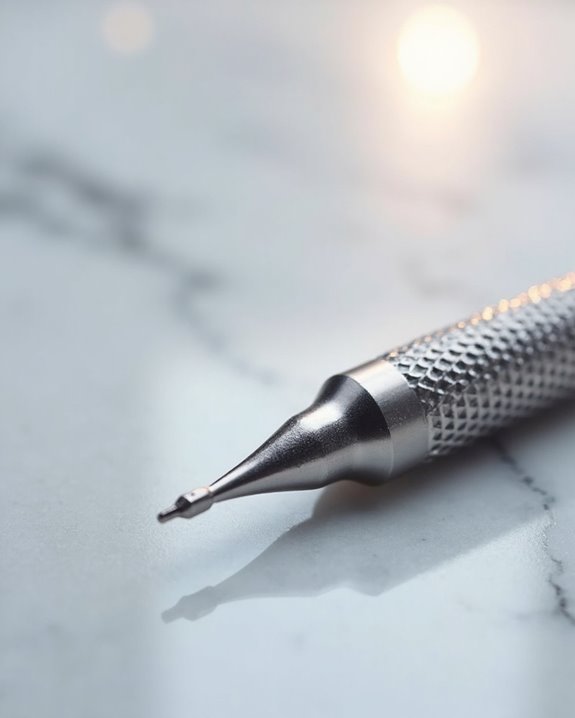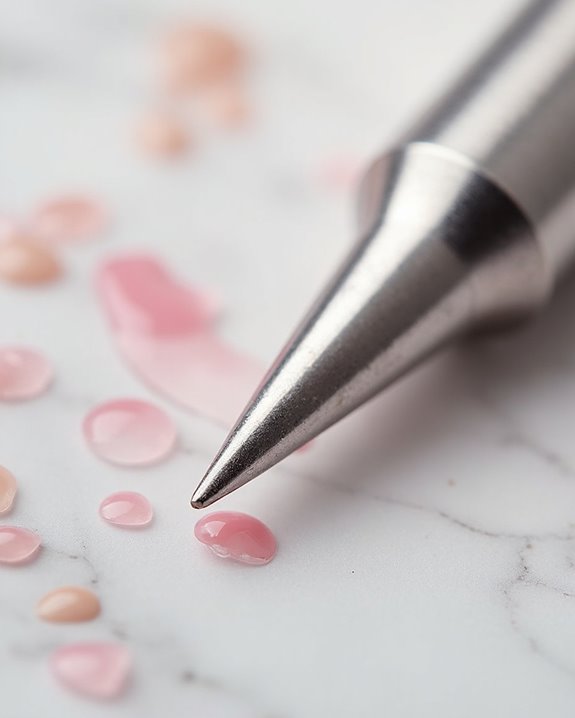Nail drill bits are specialized attachments for electric files that perform specific functions in professional nail care. These bits come in various materials, including carbide, ceramic, and diamond, each designed for different tasks such as removing acrylic, smoothing surfaces, or buffing natural nails. The bits feature different shapes like barrel, cone, and ball, with varying grits for gentle to aggressive work. Understanding these differences helps technicians select appropriate bits for safe, effective nail services.
Key Takeaways
- Nail drill bits are specialized attachments for electric files that remove, shape, buff, and polish both natural and artificial nails.
- Different bits serve specific functions: carbide bits remove acrylic, ceramic bits reduce heat, and diamond bits exfoliate nail surfaces.
- Barrel bits effectively shorten nails and work on surfaces, while sanding bands with various grits provide versatile material removal.
- Bits with 3/32″ shanks ensure compatibility with most e-file machines and come in coarse to fine options for different nail services.
- Professional nail technicians use specific bits for cuticle work, acrylic removal, smoothing, and polishing throughout the manicure process.
Understanding the Different Types of Nail Drill Bits
The world of nail drill bits encompasses a diverse range of materials, shapes, and specialized functions, each designed to address specific needs in nail care and enhancement. Carbide Bit options offer durability for efficient acrylic removal, while Ceramic bits produce less heat during extended use. Diamond bits excel at exfoliating and removing product buildup through their abrasive surface.
The shape selection includes Barrel bits for surface work and shortening, UNC bits with pointed designs for tight spaces, and Cone bits that taper for cuticle preparation. Specialized options like the Flame bit, Tapered Barrel, Ball Bit, and Mandrel Bit each serve unique purposes in professional nail services. Safety-conscious designs feature rounded tops to protect sensitive areas while accessing hard-to-reach sections of the nail, particularly important when working near cuticles.
Moreover, sanding bands in various grits like 80# to 240# provide versatility for tasks ranging from aggressive material removal to delicate finishing.
Key Materials Used in Manufacturing Nail Drill Bits
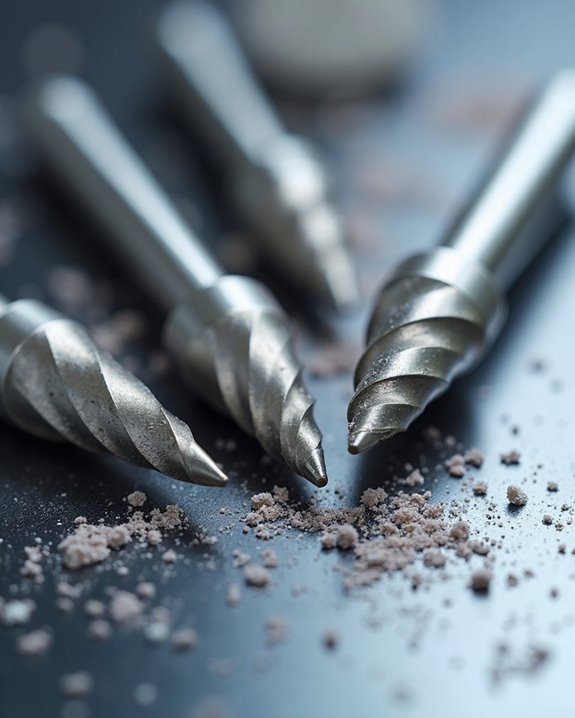
Understanding the composition of nail drill bits reveals important insights into their performance capabilities and applications. Different materials of nail drill bits determine their durability, heat resistance, and appropriate usage scenarios. Carbide bits, made of metal compounds, offer exceptional strength for removing acrylic enhancements with precision. Metal mandrels serve as foundations for attaching sanding bands, which come in various grit levels for smoothing and shaping tasks. Diamond-embedded bits provide superior abrasive qualities for exfoliation and product removal, while ceramic components reduce heat generation during extended use. Rubber elements occasionally appear in some bit designs for gentler applications. The material selection directly impacts the bit’s functionality, with professionals selecting specific compositions based on the nail service requirements and client comfort considerations. Additionally, tungsten carbide bits are renowned for maintaining sharpness over prolonged use in acrylic applications.
How to Select the Right Bit for Your Nail Service
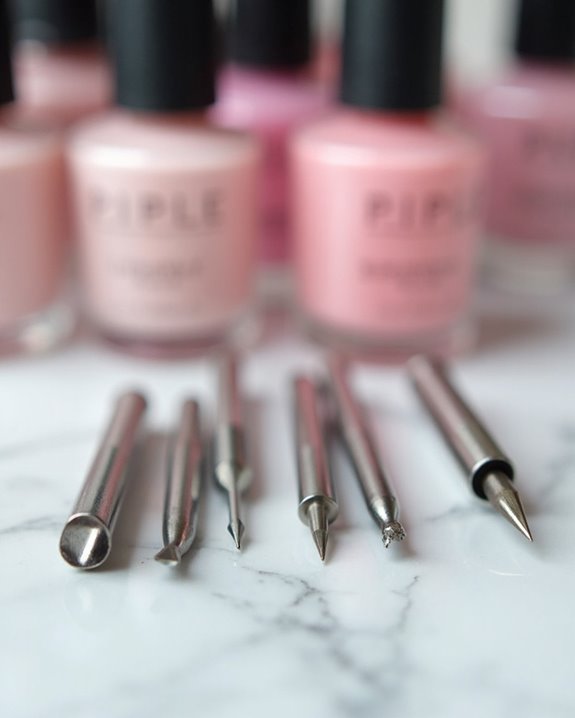
When choosing nail drill bits for professional services, technicians must consider several critical specifications to guarantee ideal results and client safety. The most fundamental requirement is selecting bits with standard 3/32″ shanks to guarantee compatibility with professional electric nail files, as incorrectly sized shanks can damage equipment and compromise performance.
Choose the correct bit based on different grits, matching coarse bits for efficient acrylic removal and fine grit options for gentle natural nail preparation. High-quality bits remove product evenly without damaging the nail plate, while flute cut depth should align with the intended application—deeper cuts for gel removal and shallower patterns for precision work. For beginners, safety tips include selecting bits with rounded tops to prevent injury, while experienced technicians often prefer durable carbide types of nail bits for consistent performance. Furthermore, investing in a comprehensive set with varied bit shapes can enhance versatility for tasks like cuticle work and detailed finishing.
Essential Techniques for Using Nail Drill Bits Safely
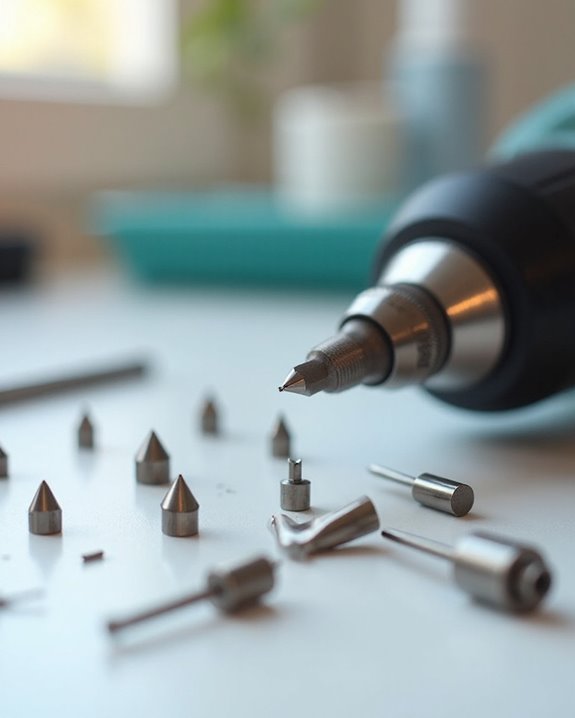
Safely operating nail drill bits requires mastering specific techniques that protect both clients and technicians from potential harm. Technicians should always rest their operating hand on a stable surface while using an electric file, preventing accidental slips that could damage the client’s nails or surrounding skin. Selecting appropriate medium grit bits, particularly safety bits rounded at the top for cuticle work, helps minimize risk to the nail bed during detailed procedures.
Proper bit cleaning between clients is non-negotiable, requiring acetone soaking followed by disinfection and UV sterilization to prevent cross-contamination. When changing bits, the e-file must be completely powered off before insertion or removal, guaranteeing the chuck is properly secured with the characteristic double click. These methodical practices guarantee technicians can work efficiently without damaging natural nails or compromising client safety.
Proper Cleaning and Maintenance of Your Nail Drill Bits

Meticulous cleaning and maintenance of nail drill bits stands as the cornerstone of professional nail services, ensuring both safety and best performance during each application. Quality bits require regular sanitization after each client, with professionals employing one of two effective methods: pre-soaking in acetone for removing product residue, followed by disinfection and UV sterilization, or thoroughly scrubbing with soap and water without damaging the bit’s integrity. While carbide and ceramic bits are made to withstand repeated cleaning cycles, sanding bands must be disposed of after single use to prevent cross-contamination. Proper storage in dry, organized containers extends bit lifespan, which typically ranges from 150-300 services depending on usage frequency. Technicians should routinely inspect bits for signs of wear, replacing smaller bits more frequently to maintain nail cleaning efficacy and client safety.
Frequently Asked Questions
What Does Nail Drill Bit Do?
Like a sculptor’s chisel, a nail drill bit employs rotary motion and electric power for material grinding and surface polishing. Its precision operation enhances nail shaping efficiency, with durability factors determining bit function longevity.
What Are Different Drill Bits Used For?
Different drill bits serve specific purposes: Wood Bits for carpentry, Metal Bits for steel, Masonry Bits for concrete, Forstner Bits for clean holes, Spade Bits for rough openings, Twist Bits for general use, Auger Bits for deep boring.
How Do You Use Nail Drill Pieces?
Proper nail drill usage requires correct speed adjustment, firm hand grip, and consistent angle positioning. Apply gentle pressure during technique variations. Safety precautions include bit sterilization, routine care, tool handling education, and regular practice sessions.
What Are the Brown Things That Come With a Nail Drill?
Those brown mysteries confounding nail enthusiasts are simply disposable sanding bands. These single-use drill inclusions slide onto mandrel bits, providing various grit levels for nail preparation while maintaining hygiene standards—an accessory identification mystery solved for curious users.

